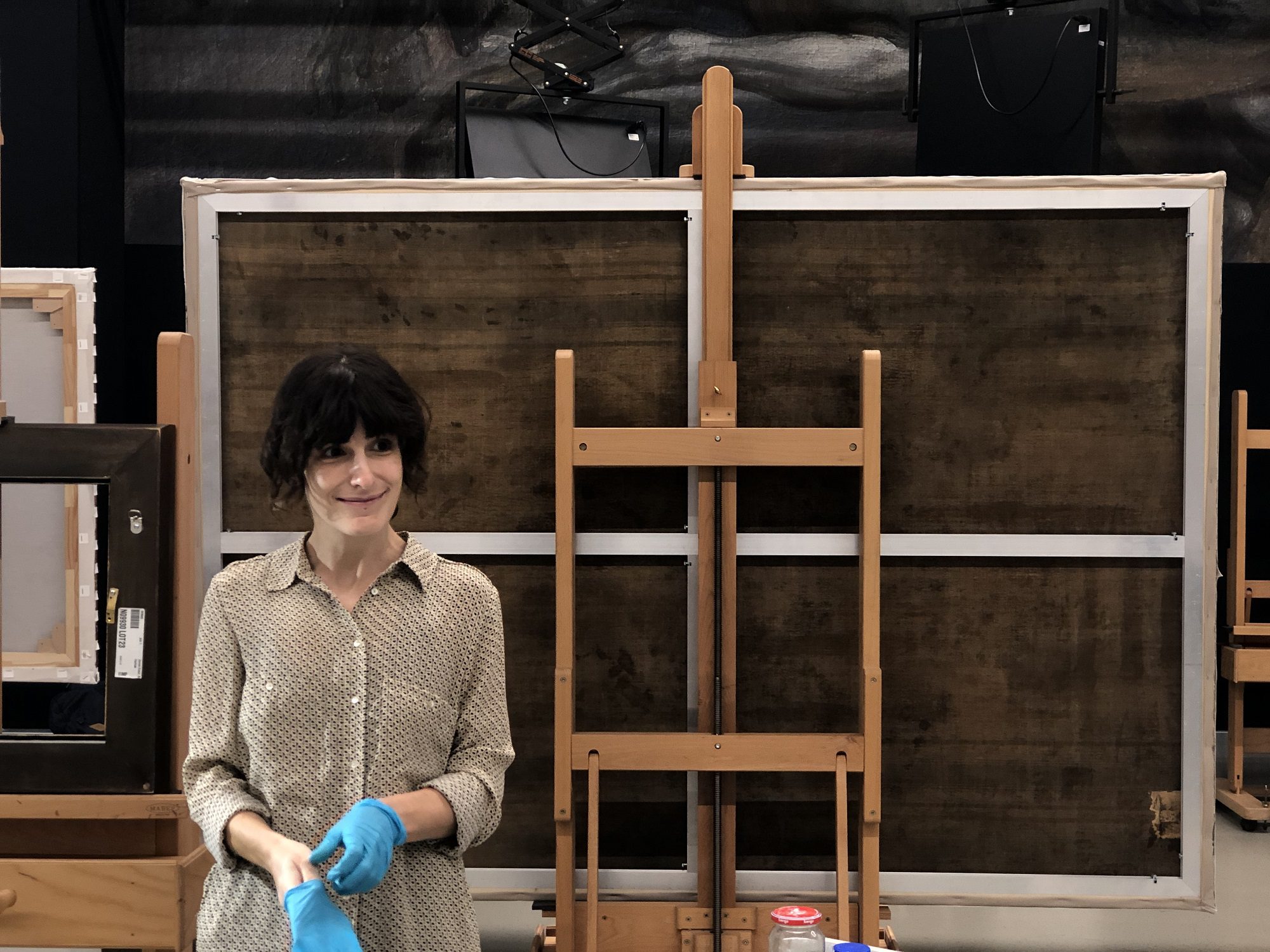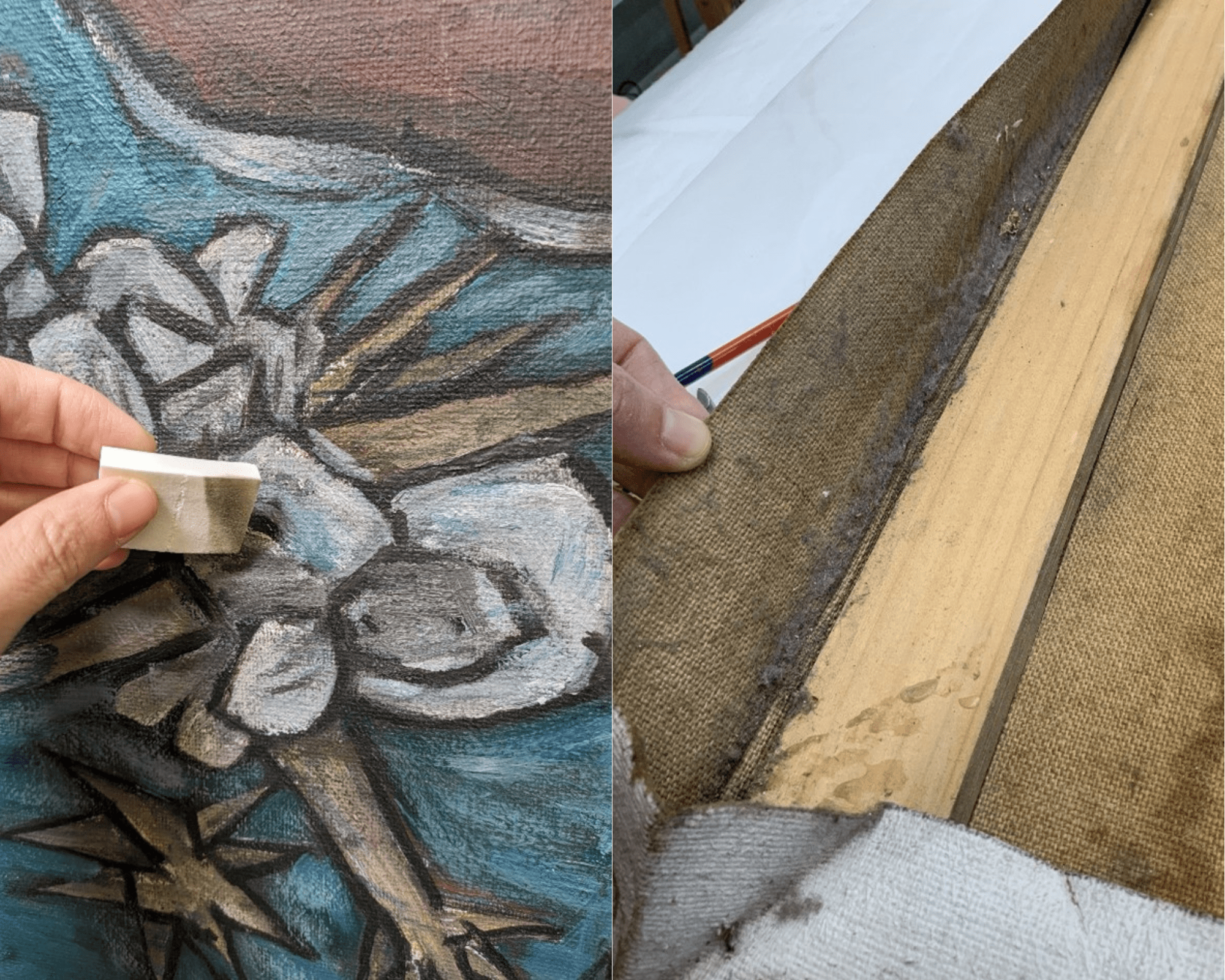Restoration of ‘Eden’: A Glimpse Behind the Scenes
This month, we take you once again behind the scenes in our restoration studio. Under the guidance of Clara Bondia, Julio Alpuy’s Eden is being prepared for an upcoming exhibition.

Julio Alpuy (1919-2009) was a Uruguayan artist closely associated with Torres García’s inner circle of collaborators. He played a fundamental role in the diffusion of Latin American art in the United States and Europe. His works have been exhibited extensively in galleries and institutions worldwide, attesting to his illustrious career. Painted in 1979, this large-scale oil on canvas is part of a series depicting Eden, featuring a narrative character of naturalistic figures intertwined with depictions of multiple couples.

Although the painting was initially mounted on its original stretcher, it quickly became apparent that it did not meet its purpose. The stretcher was not very sturdy due to the thin wooden slats nailed together. As a result, it lacked strength and a movable system to allow for proper tensioning of the canvas, resulting in significant distortions and instability. Additionally, the painting was susceptible to harmful vibrations during any movement or handling, posing a challenge for proper conservation.

Furthermore, the canvas had incurred damage and breakage at the bottom, prompting an earlier restoration attempt. This involved applying a patch crafted from commercially prepared aged canvas, secured with an unidentified synthetic adhesive that had become yellowed and brittle over time. Unfortunately, the patch was visibly marked on the front side, causing a rectangular distortion that hindered the accurate view of the artwork.

After removing the dust, the old patch was treated. The process was highly delicate, but the adhesive was gradually softened and mechanically removed. Additionally, the residue that had penetrated between the fibers was eliminated. The distortion was corrected with controlled weight and humidity, while the original fibers of the canvas were repositioned. Finally, a new reinforcement of synthetic fabric and thermoplastic film layer was applied. As a result, the tear was both volumetrically and chromatically retouched.
As for the stretcher, various options were considered. Ultimately, it was decided to replace it with a new one that meets the requirements necessary for the proper conservation of the artwork. The chosen support is made of high-quality wood with a controlled mobility system.
The artwork was carefully prepared by protecting the edges to prevent potential loss of polychromy during handling. Afterwards, the old stretcher was removed and the back of the canvas was cleaned, removing the accumulated dirt. Subsequently, the artwork was placed onto the new frame and properly stretched to avoid vibrations and aesthetically enhance the accurate representation of the painting.

Curious about where Julio Alpuy’s Eden will be on display? Keep an eye on our website and social media!